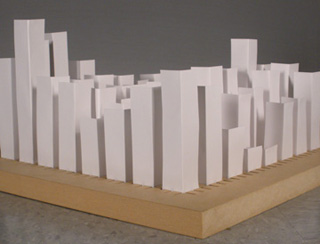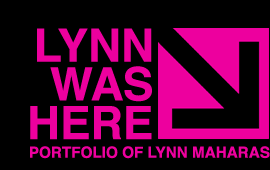Tread Erosion
Project Description
Tread Erosion is a sculpture that remaps pedestrian traffic in order to investigate and reveal the complexity of the ‘invisible’ patterns created. The sculpture reflects the patterns of movement derived from people moving though open space. Each path is documented, analyzed, and finally sculpted. The paths created begin an erosion process, like that of rivers, where material is removed and the cumulative effect on the actual space is revealed through sculpture. Data is initially gathered of people moving through the tracked area with an overhead camera. A custom-tracking algorithm interpolates the paths from the video and outputs this data where paths build upon one another. When people walk in the same area, each path builds on the one previously created adding depth to the erosion process of the sculpture.
The sculpture begins as a six foot by four and a half foot base with a grid of 1728 folded pieces of paper. Each piece of paper begins its process of erosion at a uniform height (approx. three feet). Through the custom algorithm, the data then determines where pathways have occured and which corresponding paper pixels are shortened, or eroded down. This process continues until all the video data is analyzed, thus rendering the final sculpture.
The broader aim of Tread Erosion is to highlight the imprint created by groups of seemingly individual and uncoordinated movements made by pedestrian traffic. By extracting pedestrian movement from the surrounding context and placing it into an abstract form, this project seeks to enable others to more clearly find elements of nature and beauty in their own movements within the context of public space. Tread Erosion attempts to reveal effects of the individual on the built environment as well as their role within the larger system of urban movement.
This sculpture does not happen in real-time, rather the project is intended as a two part process.
- The first part is a sculpture “eroded” by the collective movement of individuals in a previously recorded space/time.
- The second part is a gathering of new video data of people moving through the actual installation space (or high traffic area nearby) for the creation of a new piece to be revealed at the next installation.
This dual process is to reinforce the concept that individuals are part of a larger, more complex system. Furthermore, individuals are not passive contents within architecture but maintain authority to affect the built environment through movement.

